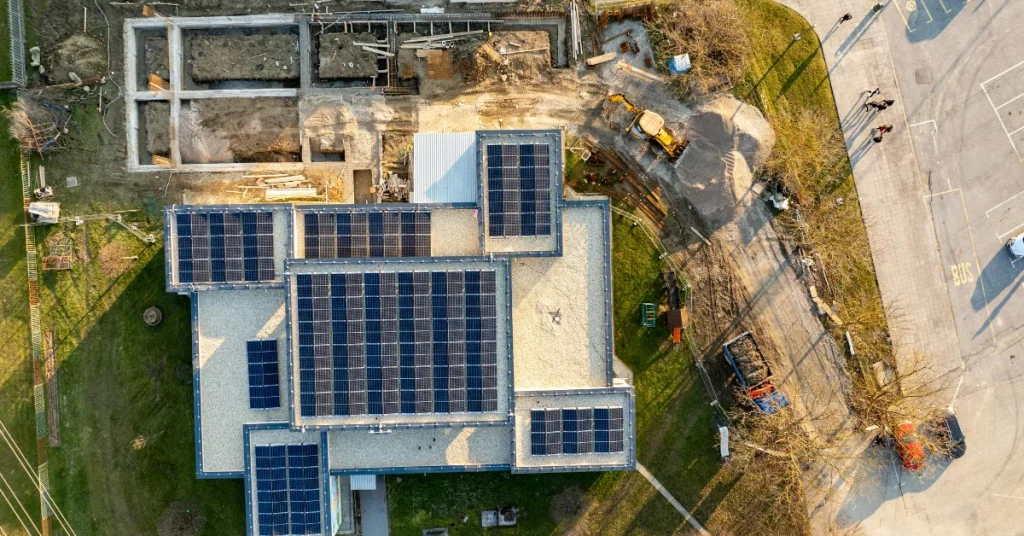The global energy landscape is undergoing a massive transformation, and at the heart of it all lies a device you might never have noticed, the photovoltaic (PV) inverter. Often called the “brains” of a solar power system, PV inverters play a critical role in converting the direct current (DC) electricity produced by solar panels into alternating current (AC) power used by homes, businesses, and the grid.
As solar energy continues to rise as one of the world’s leading renewable power sources, PV inverters have become essential for ensuring efficiency, stability, and smart control in solar systems of all sizes. According to Coherent Market Insights (2025), the global PV inverter market is set for significant expansion, growing from USD 15.3 billion in 2025 to approximately USD 42.5 billion by 2032, reflecting a strong compound annual growth rate (CAGR) of about 15.7%.
What is a PV inverter and why is it so important?
A PV inverter is the component that makes solar energy usable. While solar panels capture sunlight and convert it into DC power, most appliances and grid systems run on AC electricity. The inverter bridges this gap. Beyond simple conversion, modern inverters also:
- Regulate voltage to ensure safe and stable output.
- Track the maximum power point (MPPT) – optimizing energy harvest even under variable sunlight.
- Monitor system performance, often through Wi-Fi or IoT connectivity.
- Ensure grid compliance, automatically shutting down during outages to protect workers and infrastructure.
In short, without a PV inverter, solar panels alone couldn’t power your home or business efficiently.
The global market outlook
The PV inverter industry is expanding rapidly as countries accelerate their transition to clean energy. By 2032, the global market is expected to reach USD 42.5 billion, driven by technological innovation, supportive policies, and increasing solar adoption.
| Region | 2025 Market Share | Highlights |
| Asia-Pacific | ~44% | Rapid solar deployment in China, India, and Japan |
| North America | ~35% | Growth fueled by strong renewable policies and incentives |
| Europe | ~10% | Solar expansion driven by decarbonization targets |
| Rest of the World | ~11% | Emerging markets across Africa, Latin America, and the Middle East |
Market Value:
- 2025: $15.3 billion
- 2032 (forecast): $42.5 billion
- CAGR (2025–2032): ~15.7%
Source: Coherent Market Insights, 2025 PV Inverter Market Report
Understanding the different types of PV inverters
Not all inverters are created equal. The best type for a project depends on its size, scale, and site conditions. The three most common types are:
1. String inverters
These are the most commonly used in residential and small commercial systems. A string inverter connects several solar panels (a “string”) in series, converting the combined DC power into AC. They are affordable and efficient for rooftops with consistent sunlight exposure.
2. Microinverters
Microinverters are installed on each individual solar panel, allowing every panel to operate independently. This setup improves performance when shading, dirt, or roof angles vary. While more expensive, they provide greater system reliability and detailed monitoring.
3. Central inverters
Used in large-scale or utility solar farms, central inverters handle high voltages and massive energy outputs. They are designed for durability, scalability, and easy maintenance in grid-connected systems.
| Type | Description | Best For |
| String Inverter | Connects multiple panels in series | Residential systems |
| Microinverter | Installed per panel for individual optimization | Shaded or complex rooftops |
| Central Inverter | Large capacity for grid-scale solar | Utility projects |
Source: Coherent Market Insights, 2025
What’s driving the market’s rapid growth?
Several powerful trends are propelling the global PV inverter market forward:
- Rising solar adoption: The declining cost of solar modules and strong policy support have made solar the most installed renewable technology worldwide.
- Technological innovation: Advances in inverter efficiency, smart grid communication, and hybrid solar-plus-storage systems are reshaping the market.
- Distributed generation boom: Homeowners and businesses are increasingly producing their own energy, creating demand for smaller, high-performance inverters.
- Supportive government policies: Tax credits, renewable portfolio standards, and net metering incentives continue to make solar financially attractive.
These factors together make PV inverters a cornerstone of the renewable energy revolution.
The challenges ahead
Despite rapid growth, the inverter market faces notable challenges that shape its future trajectory:
- Intermittent solar generation: Since sunlight is not constant, inverters must be designed to handle fluctuating inputs while maintaining grid stability.
- Regulatory diversity: Different countries have unique safety and performance standards, making it harder for manufacturers to scale globally.
- Price competition: As the market becomes crowded, cost reduction pressures can impact product quality and manufacturer margins.
- Integration complexity: Combining inverters with energy storage, EV charging, and smart grid systems requires advanced engineering and communication protocols.
These challenges highlight why innovation and regulatory alignment are crucial to sustaining the industry’s growth.
Opportunities on the horizon
While obstacles exist, the future of PV inverters is filled with opportunity:
- Hybrid inverters: These can manage both solar and battery storage, offering flexibility for homes and microgrids.
- Smart, IoT-enabled systems: Next-generation inverters will use predictive analytics for real-time fault detection and energy optimization.
- Emerging markets: Nations in Africa, Southeast Asia, and Latin America are expanding their solar capacity rapidly, creating fresh demand for cost-effective inverters.
- Utility-scale expansion: As more countries commit to 100% clean energy goals, large-scale solar farms will drive high-capacity inverter installations.
In short, the next decade will see PV inverters evolve from passive energy converters to active grid participants that balance energy supply and demand.
Market growth timeline
| Year | Market Size (USD Billion) |
| 2025 | 15.3 |
| 2027 | 22.8 |
| 2029 | 31.5 |
| 2032 | 42.5 |
Source: Coherent Market Insights, 2025 Forecast Report
Final thoughts
The PV inverter market represents much more than a segment of solar technology — it’s the heartbeat of the renewable energy transition. With their ability to intelligently manage power conversion, ensure safety, and support grid stability, PV inverters are shaping the way we harness solar energy across the world.
From rooftops in California to solar farms in India, inverters are helping the global energy system evolve toward reliability, sustainability, and smarter efficiency. As innovation continues and global demand accelerates, PV inverters will remain the unsung heroes behind the clean energy revolution.




